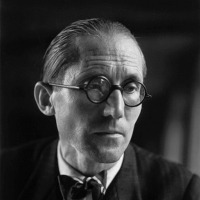The commission to design Villa Savoye was produced in 1928 by the Savoye marriage, composed by Pierre and Emilie Savoye, and whose first known document dates from the 8th of June 1928, based on the investigations of Josep Quetglas (1). In only six months and six days - or 189 days later - the project would have gone throughthree different designs to reach the final proposal that was completed in 1931.
Villa Dall'Ava was also the result of a commission from a bourgeois Parisian family, the Boudet marriage, composed by the psychologist Lydie Boudet and the editor of Le Moniteur Dominique Boudet.
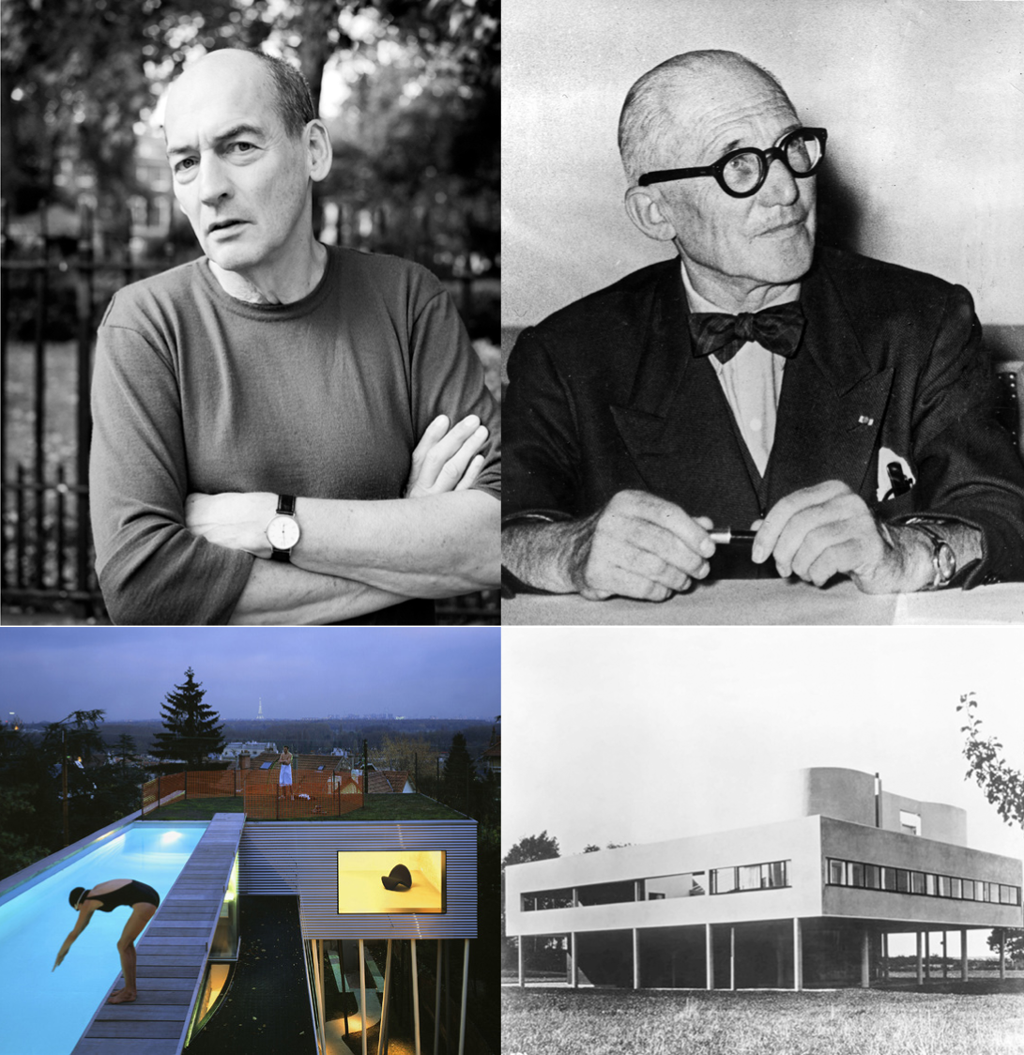
Rem Koolhaas vs Le Corbusier
Villa Dall'Ava vs Villa Savoye
The commission took place in 1984, six years after the publication of Delirious New York, and when Rem Koolhaas was barely in the running with four projects including the Checkpoint Charlie Apartments in Berlin (1980), the Almere Police Station (1982) the interior design of the advertising agency Lintas in Amsterdam (1984) and the commission that this same year received for the Patio Villa (1984). Therefore the housing for the Boudet family would become his second residential project and quickly in one of his most conceptually charged works.
The origin of the project is situated in a letter that the marriage Boudet wrote to Rem Koolhaas in a tone, according to the Dutch architect, almost desperate (2). After having called for a failed restricted competition to select the architect who designed the house, the marriage put its hope in the Dutch architect, known by Dominique for the fame that had been acquiring thanks to the publication of Delirious New York.
For Rem Koolhaas the project was a challenge at three different levels. In the first place, the family was looking for a project to be erected as a masterpiece of contemporary architecture. However, the neighbourhood of Saint-Cloud is composed largely of classical nineteenth-century homes in a Monet-like landscape. On the other hand the program that the family demanded consisted of two independent apartments, for the parents and their daughter respectively, to be designed on a relatively small plot. And finally for Rem Koolhaas it was an added challenge to reconcile Dominique's desire to build a light house with Lydie's extravagant requirement of building a swimming pool on the deck from which to see the Eiffel Tower while taking a bath.
The common origin of both projects, Villa Savoye and Villa Dall'Ava, can lead us to reflect on how important is to have a good client – good maybe means rich – in order to design a masterpiece.As happened with Villa Savoye, Villa Dall'Ava would base its inventiveness on the freedom, confidence and, of course, the economic resources that a bourgeois family can provide with to an architect with certain revolutionary disposition to materialize unconventional ideas.
Ideas those previous mentioned, that turn Villa Dall'Ava into a sagacious and satirical critique of modernity and its theoretical bases. It is not necessary to spend much time in their analysis to find all the characteristic elements of the Modern Movement now reconverted and altered to become burlesque and irreverent.
Is this a provocation or a declaration of intents? Is it a response to the single-family housingthat great masters from Frank Lloyd Wright's to Le Corbusier, passing through Mies van der Rohe, designed during the 20th century?
As previously mentioned, one of the biggest challenges that Rem Koolhaas faced with this project wasdesigning a masterpiece of contemporary architecture. Such was the demand of a client who, knowing the creative ability of the Dutch architect, gives him full powers in the design of the project. But this challenge was increased, in the words of the architect, by the proximity of other two modern masterpieces: Maison Roche and Ville Cook. Although Koolhaas didn’t mention it in the project description, the proximity to Ville Savoye would also have played a preponderant role: a magnificent opportunity to face contemporaneity and modernity within half an hour by car.
So, can we do a reading of Villa Dall'Ava as the contemporary Villa Savoye? If Villa Savoye is known by something, it is by scrupulously reuniting Le Corbusier’s five points of the modern architecture. What is the relationship between them and Villa Dall'Ava?
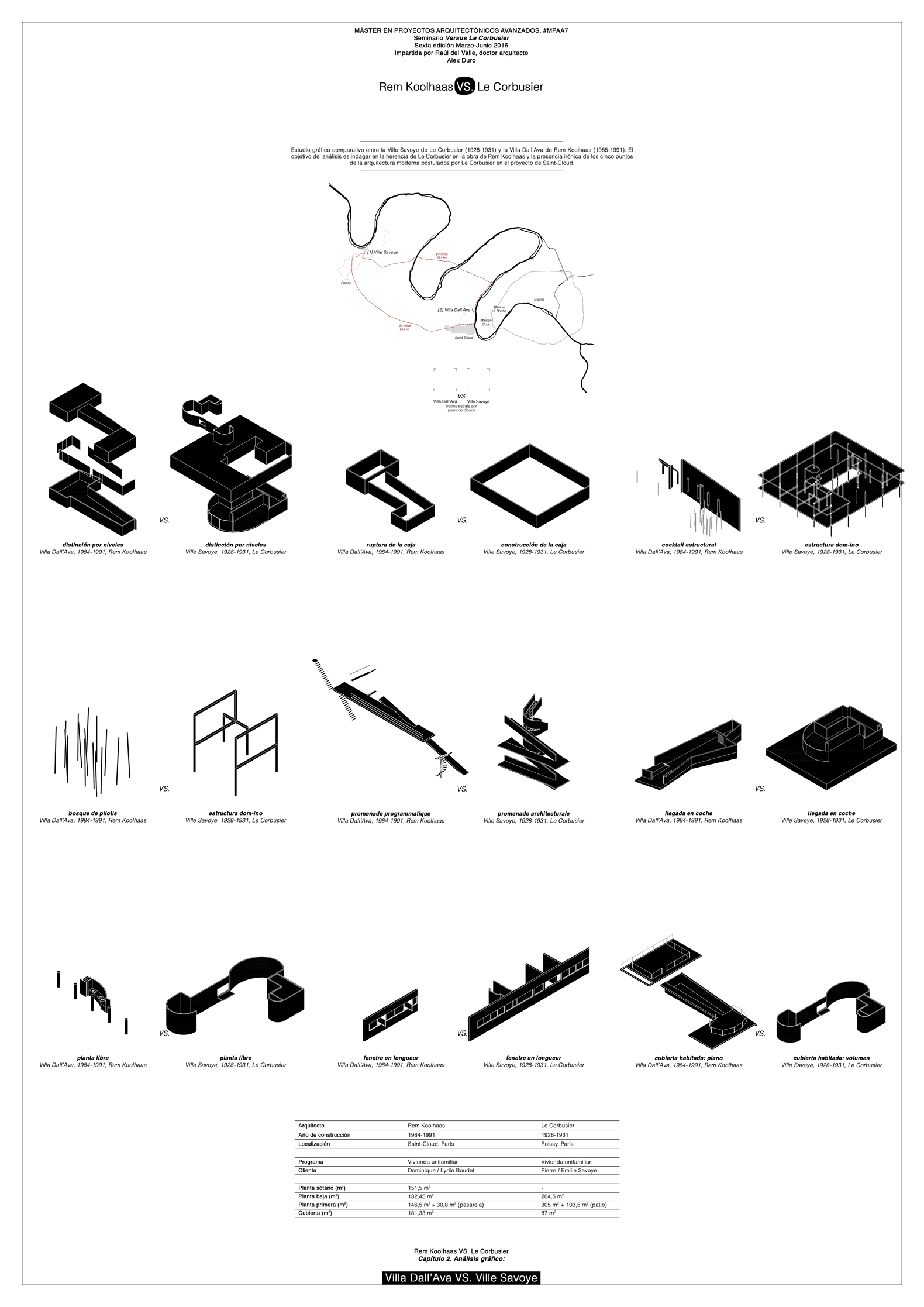
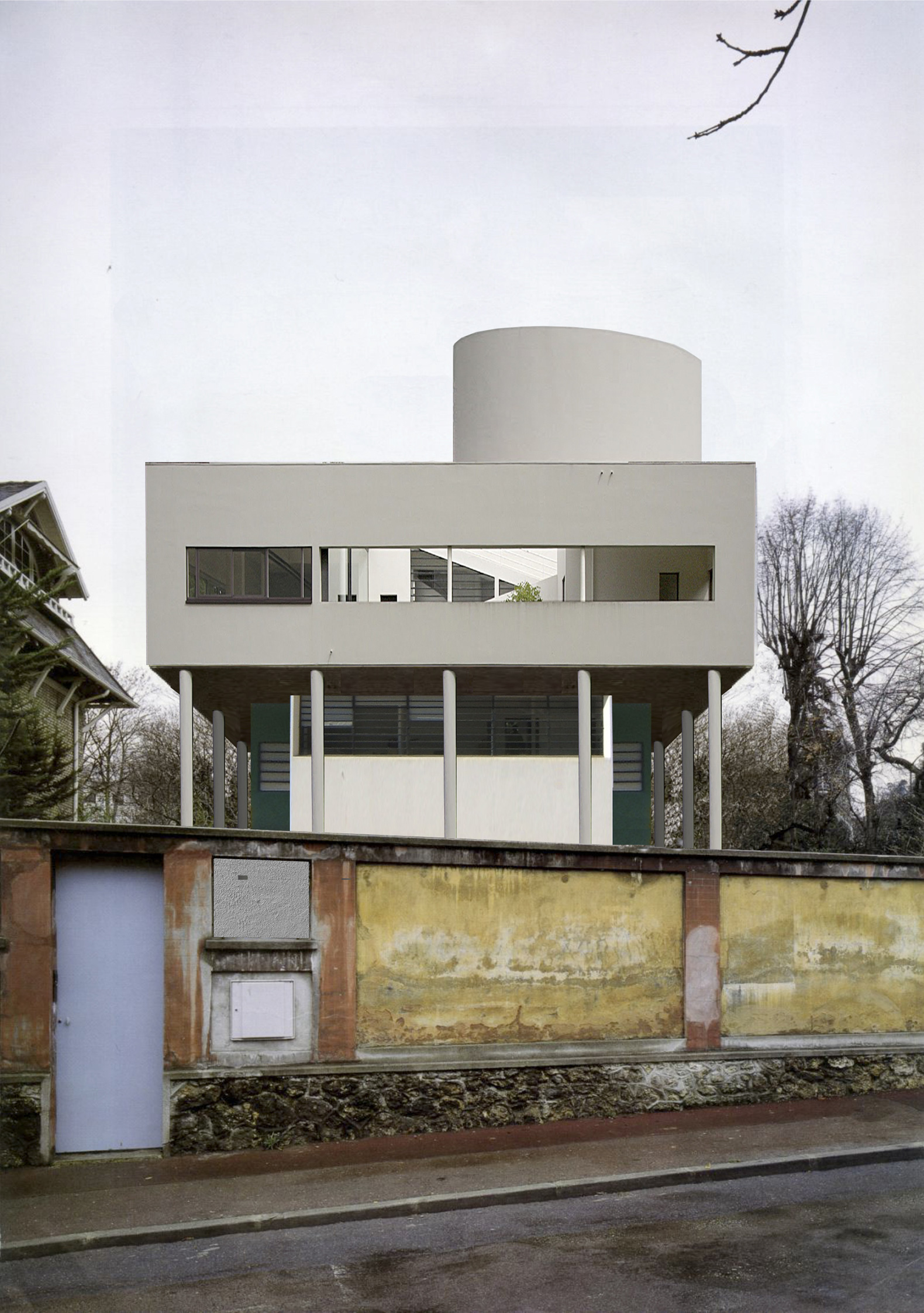
Villa Dall'Ava, Saint-Cloud. Composition © Alex Duro
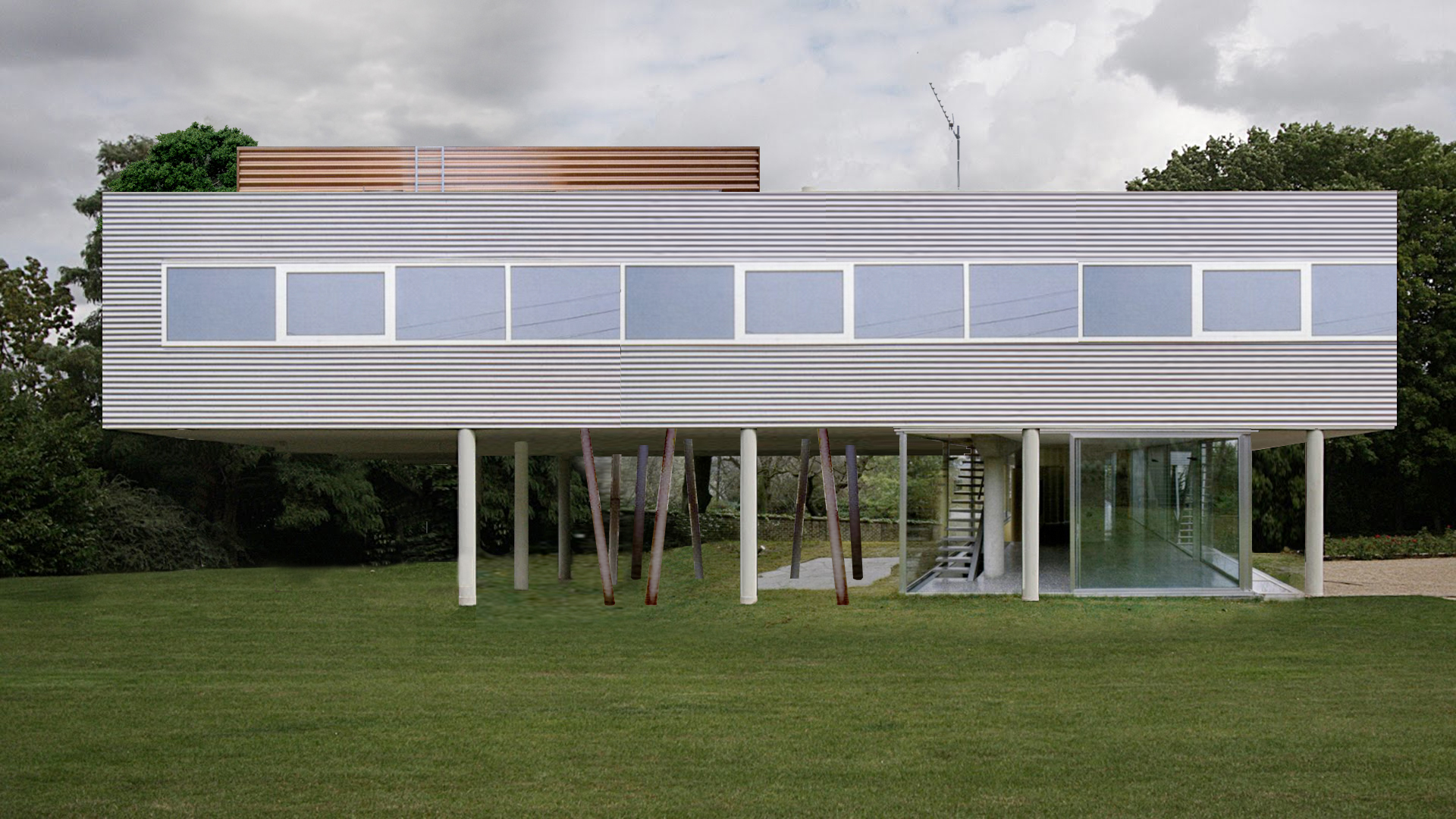
Villa Savoye, Poissy. Composition © Alex Duro
The five points of postmodern architecture
Villa Dall'Ava is strictly contextual, culturally contextual. Rem Koolhaas’ breeding ground, arise during May ’68 in Paris, puts into question the modern heritage as the French philosopher Jean-Françoise Lyotart did later – in 1979 and a year after the publication of Delirious New York – when he wrote The condition postmoderne: rapport sur le savoir (3).
Passing of time makes Modern Movement a part of the same historical processthat they were rejecting under their emblem of timeless movement. However, postmodern-man has “come late to history” and he is the one who will have to quote Barbara Cartlandto express a passionate love (4). So, postmodern-man main relation with history will be quotation, the paraphrase about what has already been said and about which the comment is the only thing left (5). This commentary will be characterized by being provocative, sarcastic and deliberately critical, from a nonconformist position with the past, but without clear solutions for the future. Nonconformity based on the disappointment that produces in the individual the knowing that it is late in history as to propose anything new. Hence he adopts irony as a vehicle of nonconformist expression, but always unconcerned. Architecture departs from the seriousness of absolute truths and becomes almost a game, a field of experimentation where vitality is the substitute for reason. The five points of postmodern architecture, paraphrasing, provocation, disappointment, irony and vitality, call into question the very foundations of architecture. The utilitas, firmitas and venustasis altered with complex programs, incongruent structures and a taste for the ugly or the non-compositive.
Imbued with this new zeitgeist is Rem Koolhaas when he receives a commission that became a turning point in his career. After its revisited modernity, exemplified in the Villa de Patio (1984-1988), a commission like Villa Dall'Ava stands as an emblem of the transition. Villa Dall'Ava project starts in the 20th century and it doesn’t end until the 21st century. At least if we understand20th century as the shortest century in history, comprised between 1914 and 1989.
From bucolic landscape to urban density
Waterfall house, Farnsworth house and Villa Savoye are not dwellings themselves but manifestos. Manifestos of a life associated to the outskirts where the project does not find more limitations than the own creativity of the architect. Its non-habitability is justified by laying the foundations of what will be the single-family home during the 20th century. Its contextual kindness allows three great masters such as Frank Lloyd Wright, Mies van der Rohe and Le Corbusier to focus all their attention on postulating the foundations of a new way of dwelling. But what happens when we leave the bucolic landscape – the open space –, and we try to project the bourgeois housing within the urban context? What happens to the modern box when it comes into contact with the city?
When the house reaches the city, architecture changes. The modern tabula rasa in which the architect acts as a free creator disappears and the rules and mechanisms of the liberal city comes to a first place. The uncorrupted box enclosing the archetypal dwelling of the Modern movement has been deformed and transfigured to offer a new version of itself which, like few others, exemplifies Villa Dall'Ava. But, the appearance of the city within the ingredients that the architect has to have into account, guarantees the dialogue with it? The answer to this question is as simple as it is direct. No.
Such is the case that you can read the relationship between Villa Dall'Ava and the Parisian neighbourhood of Saint-Cloud as a duality that encloses a physical truth and a conceptual lie. Physical truth whose dimension is measured in meters and is crystallized in a lower ground floor plant that, making use of the most local materiality, proposes a contextual relationship that disappears as soon as we look up into the rest of the design. Here starts the conceptual lie.The house is a direct translation of the way of understanding the contemporary city that Rem Koolhaas has. Understanding whose main lines are based on the City the Captive Globe, where architecture is the result of heterogeneous wills support on a common substrate; the same plinth with which the basement of Villa Dall'Ava is materialized.
But, as mentioned before, the city as a factor of influence on the project does not mean that there is a relationship with the context. The bucolic landscape disappears and the 'new bourgeois' returns to urban life. The substitution of the modern large garden by the plot in the outskirts is not a project decision but a conditioning factor. The decision of the project is to articulate an autonomous architecture that, very sarcastically, keeps in its left sleeve a conceptual ace with which to justify the connection through a stone podium, when with the right hand draws an autonomous architecture and finds in the provocation its maximum zenith. Here, again, Rem Koolhaas uses his formidable narrative ability to justify the one and the other as few heirs of postmodernity could do so naturally.
But if the contextual justification of a clearly autonomous architecture was not necessary, why was this anxious desire of Rem Koolhaas to create a connection between the project and the neighbourhood of Saint-Cloud? We can´t forget now the close presence of two Le Corbusier´s projects, Maison La Roche and Villa Cook. Both architectures respond to the modern pattern of an autonomous object that appears in the city without any need of it. Is it not therefore Koolhaas's desire when relating the project with its context, at least conceptually, a new response to the Modern Movement and especially to Le Corbusier? Despite the landscape relation or the construction of the podium, whose materials borrow from the pre-existing, the volumetric articulation, thefaçade´s treatment or the plans themselves are quite close to the autonomy with which Maison La Roche and Villa Cook are treated. In spite of Koolhaas himself.
Unstable equilibrium
Facing the dom-ino structure that defines Villa Savoye, in Villa Dall'Ava Rem Koolhaas projects a hybrid structure or structural cocktail. This cocktail includes a loading wall, a pillars’ forest, a variable section beamand a pool that, as a concrete vessel, functions as a global bracing.
On the one hand the structure now becomes a mechanism with which to reflect the expressiveness of the project. Rationality disappears. We no longer speak about a quasi-scientific system with which to support living spaces. Now the structure becomes protagonist and allows the architect to articulate a volume that from the first moment tells us about the interior of the house. If in Villa Savoye there was an ambition for coherence, for heterogeneity, the structure now deliberately varies according to the problem.
On the other hand the structure aspires to become architecture being inhabited. This is how we can understand that Rem Koolhaas disfigures and inclines the rationality of the dom-ino structure to offer us a pillars’ forest that speaks more of enjoyment and spatial experience. The structure does no longer exist because it has to exist. It becomes an interior space and claims its protagonism not as a means but as an end in itself.
The "critical-paranoid" method that Rem Koolhaas exposes in Delirious New York helps us to understand the architect's rejection of the strictly rational. This method consists of the intuitive linking of a priori unrelated elements to arrive at a result that acquires a new meaning. Here appears Koolhaas's obsession with levitating the boxes that contain the apartments so they float like a concrete butterfly (6) that puts its legs on the ground. Legs that, curved and transfigured, we also find in the iconography of Dalí and that surely Koolhaas knew when it projected them.
Therefore, the presence of an incongruous and oversized structure attends to a complex process result of several reasons. Although the simplest reading is that of pure postmodern irony, the search for the overcoming of the rational and the ambition to transform the technique into architecture through its habitability respond to a new approach. Finally, we can’t avoid but notice the importance of the initiatory position of the pillars’ forest. This new space experience is associated with the entrance and manages to stimulate the dynamism necessary for the architectural spectator to start the promenade towards the interior of the house.
Promenade programmatique
The architecture of Le Corbusier finds in the promenade architecturale the connection link between the separate elements that defines it. The route is not an element in itself but a way from which to experience the spatiality of architecture in its different stages.
In Villa Savoye this experience offers the architectural spectator two possibilities that materialize in the staircase and the ramp, connecting mechanisms of the independent strata proposed by the dom-ino system.
This same idea of architecture from the promenade appears in Villa Dall'Ava. The promenade that proposes Koolhaas is not architecturale but rather programmatique. The route ceases to focus on articulating a spatial experience that connects independent strata - the dom-ino structure - to solve a program based on the users who live in the house. The program-travel link is necessary since the Boudet family requests two independent apartments. Direct consequence is the definition of Rem Koolhaas of a non-spatial route linked to the user. The promenade of the marriage Boudet has nothing to do with that of his daughter, although both are part of the same project.


Promenade programmatique. Boudet marriage. Composition © Alex Duro.
Villa Dall'Ava VS Villa Savoye
As a conclusion, we can reiterate the understanding of Villa Dall'Ava as the conceptual response to Villa Savoye. The five points of modern architecture are reconverted from the irony of postmodernity, turning Villa Dall'Ava into a commentary on Le Corbusier's project.
On the other hand, and it has been seen, the bourgeois single-family home faces a new challenge when it is projected in contact with the city. But this situation in itself leads nowhere, does not necessarily give rise to a relationship with the context in which it can be as independent or more than it was the housing placed in the middle of the bucolic landscape.
Villa Dall'Ava can never be a masterpiece from the moment that it is postulated as a theoretical response to previous statements. Although it is necessary to review and criticize the established cannons, a masterpiece can’t be done from reinterpretation, despite the history of architecture is the result of constant and referential evolution. The masterpiece, as Villa Savoye, is propositional, not paraphrastic.
NOTES.-
(2) KOOLHAAS R., MAU B., SIGLER J. Small, medium, large, extra-large: Office for Metropolitan Architecture: Rem Koolhaas and Bruce Mau. New York: MonacelliPress; 1995, p. 133.
(3) LYOTARD, JF. La Conditionpostmoderne: Rapport sur le savoir. Madrid: Cátedra; 1984.
(4) “I think of the postmodern attitude as that of a man who loves a very cultivated woman and knows that he cannot say to her "I love you madly", because he knows that she knows (and that she knows he knows) that these words have already been written by Barbara Cartland. Still there is a solution. He can say "As Barbara Cartland would put it, I love you madly”. Umberto Eco in“Do you know what happens when you say you love me?”
(5) EISENMAN, P. Notes on conceptual Architecture. New York: Oppositions; 1967.
(6) KOOLHAAS, R. MAU, B. SIGLER, J. Op. cit. 2, p. 134.
(7) “I may have been irritated by the fact that the house was exactly on the axis of the Eiffel Tower. But it was also a unique opportunity for an intimate situation, swimming almost naked and in contact with the scale of the great metropolis (...). I did everything possible to prevent this moment from becoming the apotheosis of the house. The house is not a hallway leading to this sublime event”. Video documentary Villa Dall’Ava, directed, written and produced by Richard Copans, a coproduction by La Sept-Arte, Georges Pompidou Centre and Les Films d’Ici, France, 1995.





















